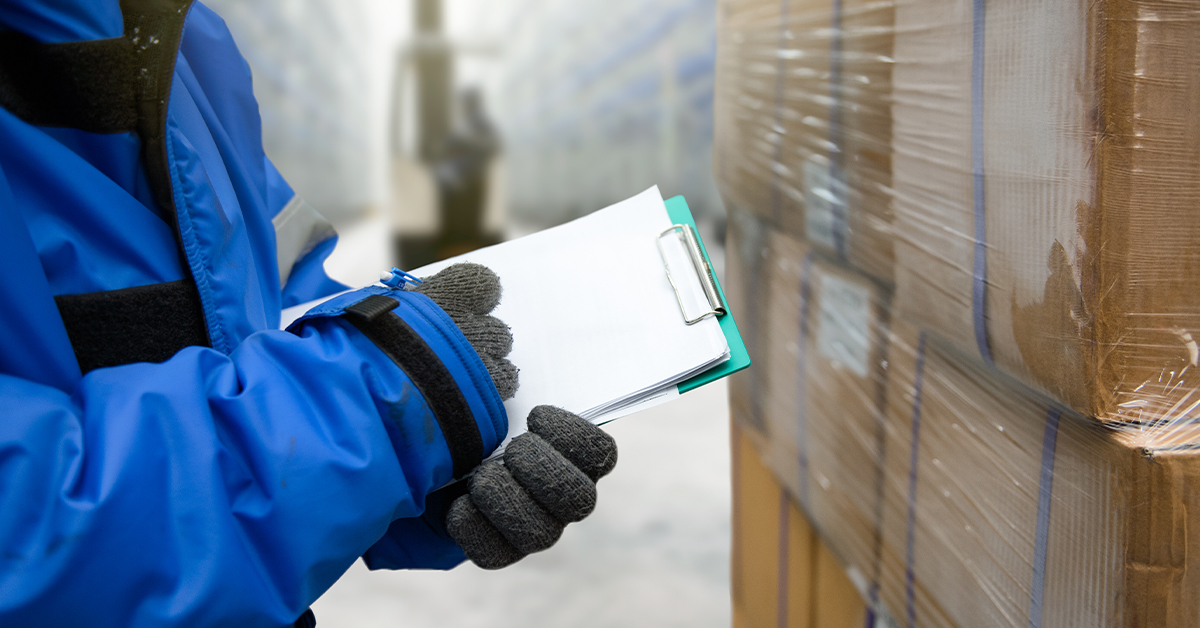A Conversation About the Pandemic’s Impact on the Newest Industrial Darling
In recent years, cold storage has become a very active property sector as investors warm to the property type amidst strong demand. Contrary to popular perception, food and beverage logistics is driving demand far more than COVID-19 vaccine distribution. Popular even before the pandemic, online grocery shopping has grown by leaps and bounds in the past year.
In a February SIOR Chicago Fireside Chat, SIOR Chicago Chapter 2021 President Adam Marshall, Senior Managing Director, Industrial Logistics, Newmark, discussed cold storage trends with Jake Finley, CEO, Karis Cold Storage. The following are highlights of their discussion.
Marshall: What is the current state of the cold storage industry?
Finley: As demand for cold storage has grown, supply has not kept pace—and the inventory is aging. The average U.S. cold storage facility is anywhere from 37 to 42 years old. You’re not seeing speculative development, and some older, antiquated buildings that were used for cold storage in the past may have fallen out of the category altogether because they are obsolete. Supply is constrained and vacancy is next to nothing.
Marshall: What are the primary markets for cold storage?
Finley: Demand for cold storage facilities, as for dry warehouses, is population-driven. The primary use of cold storage is to bring food close to the population. Many food products will not last long unless refrigerated or frozen, of course. Port markets also need cold storage since many fruits and vegetables are imported and protein products are exported.
Marshall: How has the rise of e-commerce groceries changed the cold storage supply chain?
Finley: It’s ever-changing and ever-growing. Online grocery delivery is creating huge demand for cold storage space. Newfound necessity during the pandemic helped consumers overcome any discomfort about buying groceries online. Now, consumers are comfortable ordering food online to cook and consume at home. In addition, consumers are stocking more frozen foods, further creating demand for cold storage. Also, consumers want foods without preservatives, which often require refrigeration.
Some food manufacturers and distributors use PRWs to fulfill consumer orders for manufacturers directly. Consumers can obtain some products—such as organic meats—cold-packed and delivered straight from the manufacturer to their homes. The trade-off is that shipping and packing are incredibly expensive. The full cold storage supply chain from producer to last-mile delivery is just in its infancy.
Marshall: What are the challenges in building new state-of-the-art cold storage facilities?
Finley: The primary challenge is that facilities are typically built for specific users. It’s nothing like building a dry warehouse—there are so many different functions and types of cold storage facilities. How food moves from the “first mile” of packaging meats or frozen vegetables to the consumer varies widely and different types of cold storage facilities play different roles from point A to point B.
There are no true “plain vanilla” cold storage buildings, other than those occupied by the large public refrigerated warehouse (PRW) operators—the third-party logistics of cold storage—that are primarily moving pallets in and out. They’re looking for large cubic square footage and very high clear-heights.
They’re adding automation, too, which changes the entire dynamic for us as a private equity-real estate company. The automation can cost more than the entire building. Some also need wastewater treatment plants on site. No two facilities look the same, and development requires significant end-user interaction, even for PRWs.
Marshall: What is the availability of capital for cold storage space?
Finley: Just as outside storage space has attracted institutional capital in recent years, cold storage is like that from our perspective. The general perception is that cold storage has a higher investment yield than dry storage right now, and investors are pursuing yield. That’s driving capital to the cold storage space—I’d say it’s unlimited.
Having been in this space for some years, we see investor education is needed. What is a refrigeration system? Is ammonia dangerous? What is the risk? Buying a cold storage property triple net-leased to Kraft is easy for investors to be comfortable with, but investing in a speculative cold storage project would require extensive investor education.
Marshall: What has been the impact of the COVID-19 pandemic?
Finley: As I said in another interview in June or July, it advanced the industry 20 years in two months. It’s created a marketplace in which everyone is comfortable buying groceries online. That was one of the last remaining items to be heavily purchased online. People are eating at home more than they ever have.
What we have heard from our customers is that, early on, there were shortages in grocery stores as restaurants shut down, while restaurant supplies were overstocked. Now we’re hearing that food manufacturers and producers that were relying on outsourced PRWs are bringing it in-house. They are redesigning their supply chains and facilities to have more control over distribution and less reliance on third parties, and to be able to respond quickly to shifts in consumer versus commercial demand.
Marshall: Will traditional grocery stores still be a part of the supply chain?
Finley: Grocery stores will be a huge part of the supply chain. E-commerce companies have proven that it is easy to deliver even perishable groceries to the consumer’s doorstep, though retail grocery stores already have some cold storage infrastructure in place.
However, grocery stores have very little freezer and refrigerator space. A major retrofit to add more storage may be possible, but it would mean sacrificing floor space for other products. A grocery store would need to determine whether that is a feasible strategy, and whether its utilities can support the considerable demands of additional refrigeration.
I don’t have a crystal ball about consumer buying patterns. But it doesn’t make sense for milk to be at the back of the store if a consumer is simply picking up their online order and not making any impulse buys. There may be a more efficient way for local grocers to fulfill orders, whether through a multi-use warehouse or separate dry and cold warehouses.
However, some grocers are now rethinking their supply chains and strategies to improve efficiency. Often, if a consumer orders their groceries online, they are actually buying from their local grocery store. Then, local grocery store employees pack orders for pick-up.
Marshall: How does cold storage support vaccine distribution?
Finley: The biopharmaceutical companies already have major supply chain networks that include cold storage facilities—although some are seeking additional cold storage space in certain markets where it is not available. Even before the COVID-19 pandemic, half of new medicines approved in 2018 required temperature control, but food is a much larger driver of demand for new cold storage space.
A larger issue at present is that the Pfizer COVID-19 vaccine requires a very cold temperature that is not necessarily attainable in a traditional cold storage facility. Given the urgent need, the “box-in-a-box” strategy—placing freezer boxes inside a dry warehouse—is much faster than spending a year or more building a new cold storage facility.
Marshall: What is your strategy as we navigate through the pandemic and beyond?
Finley: Our strategy is the same as before the pandemic, but it’s accelerated. We’re targeting the top 20 markets in the country. We see huge opportunity for producers, manufacturers or PRWs to expand their footprints because the demand is there. We’re trying to build the right facilities in the right locations.
This is an excerpt from the transcript of the Fireside Chat published on February 15, 2021 by the SIOR Chicago Chapter.






